These Boots are Made for Walking (Around in the Forest)
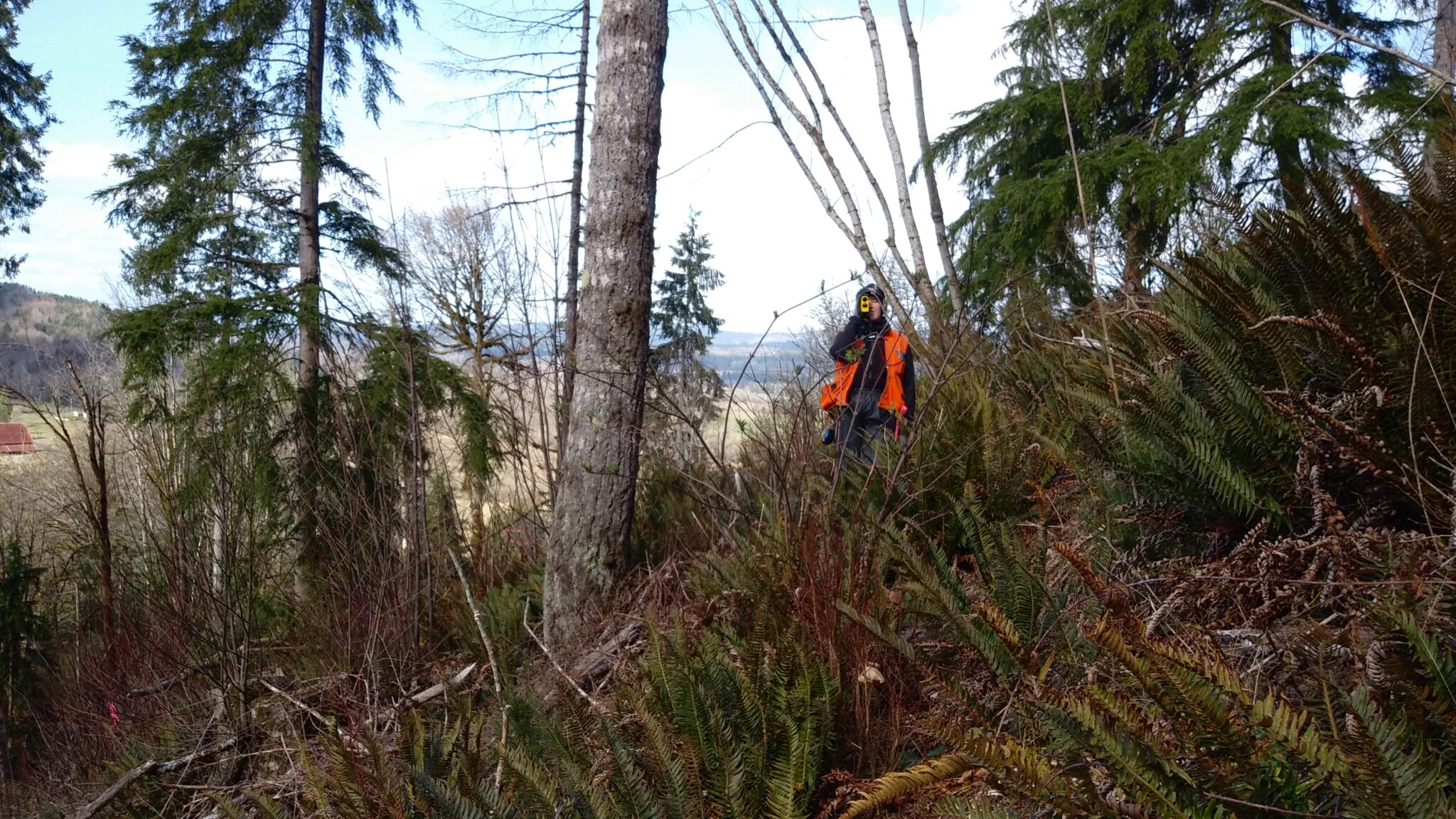
Unless you own a forest and have had an NNRG forester out for a site visit, the details of a forester’s job might be a little murky to you. You suspect it involves wearing a cool vest, tree puns, and something called DBH tape…right?
In the interest of pulling back the curtain on the critical work our foresters do―and perhaps informing those who wish to pursue this rewarding career path―we asked our foresters Kirk Hanson, Jaal Mann, and Sam Castro to describe what they do behind the scenes at Northwest Natural Resource Group. Because it’s not all just romping through the forest. (Though that is a lot of it. And it’s pretty great.)
Kirk Hanson | NNRG Director of Forestry | kirk@nnrg.org
My usual workday begins like most days – with a cat and a cup of coffee. Once those two biological imperatives are satisfied, I stare at my smartphone long enough for it to tell me what the plan is for the day. I always do what my smartphone tells me. This usually leads to pushing some buttons on my computer for what always seems like an interminable amount of time. However, the button pushing is very useful for maintaining important correspondences with highly esteemed colleagues and producing management plans for many of the extraordinary forests that I’m privileged enough to be invited to work on. I find all forests, regardless of their scale, have mysteries to share and opportunities for restoration and good stewardship. The plans I write span the gamut from 10-acre woodlots owned by Ma & Pa Kettle in rural WA to 4,000-acre community forests in the foothills of the Cascade Mountains.
On a really good day I have field work scheduled. For some reason I’ve found that I’m very competent at scheduling and completing field work, but less disciplined about the paperwork end of things. Someday this idiosyncrasy will be explained to me by a trained therapist. Until then I just roll with it. I head out the back door and there’s my truck. I like my truck a lot. It’s a 4-wheel drive Toyota Tacoma and gets me into places I need to be. It also gets me into places I shouldn’t be. My lady never lets me leave the house without a come-along and a tow strap. She understands that my decision making is often a blend of curiosity and foolishness.
My smartphone frequently directs me to forests all over the Pacific Northwest. Some days I’m in the San Juans teaching workshops on thinning. Other days I’m consulting with a conservation organization or a small woodland owner who wants to do something more creative than plantation forestry. My speciality is translating the abstract science of ecological forestry to easily understandable principles that most folks can apply in their own woods.
On the weekends I load my saw and gear onto the roof rack of my truck and head to my own family’s forest to tinker in the woods. Yeah, during the week I’m a forester and on the weekends I’m a forester. It’s a chronic thing for me, having the same avocation as my vocation, and perhaps someday the same therapist will explain this to me as well. Until then I’ll just roll with it.
My workday ends the same way most of my days end – with a cat. I don’t drink coffee in the evening though as I’ve learned that it keeps me up until the next day, which makes the next day hard to get through. So instead I curl up with a good book on forest ecology and wonder where my smartphone will take me next. Maybe to your forest?
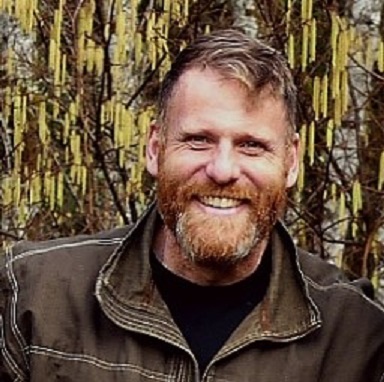

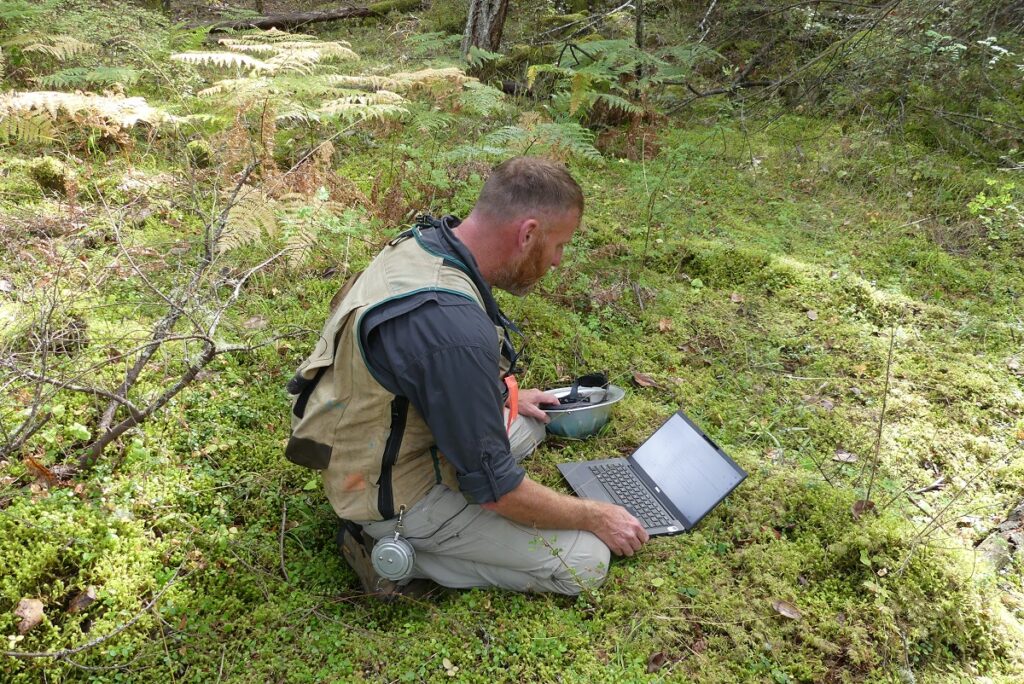
Jaal Mann | NNRG Lead Forester | jaal@nnrg.org
One of the best things about the job is the variety. Often the earlier part of my week is spent with emails, meetings, accounting ― not really the “glamorous” side of forestry but there’s often office work to catch up on from the previous week. That office work might include some GIS mapping too, for forest practices applications or forest management plans.
Fieldwork often tends to fall on Tuesday through Thursday, and I usually end up going out in the field 2-3 days per week. Depending on the site, driving to the forest could take a substantial chunk of time. The fieldwork itself could include initial site visits to new landowners, working on harvest layouts (boundary marking, tree marking, riparian management zone flagging, etc), or doing forest inventory plots. It often also involves compliance checks, where we try to get out to every active job once per week to review the loggers’ work and address questions or issues that come up. I usually end up spending between 6-8 hours in the field, and I try to find a pretty spot for lunch in the middle.
At the end of the week, I usually like to take some time to catch up on communications with landowners, loggers, and coworkers as they can tend to stack up during the week if I’m out in the field. It’s also a good time for data entry.

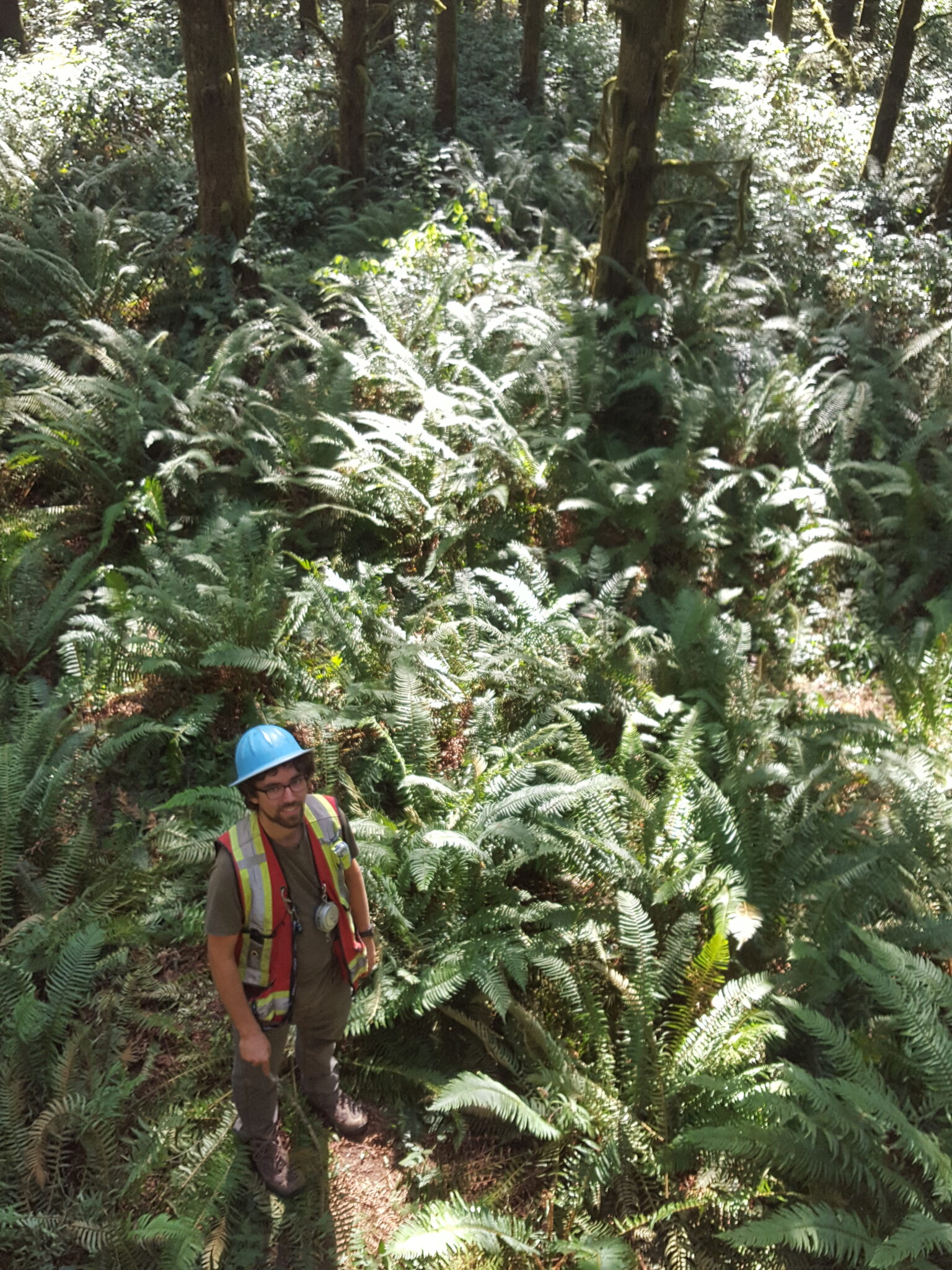
Sam Castro | NNRG Forester | sam@nnrg.org
My day-to-day activities really depend on whether I’m in the field that day, or having an office day.
On a field day, I will usually start around 6 or 7am and drive to the field site. I meet up with one of the forest techs and, if it is the first day on site, either another forester or the land owner. We go over the project protocols, organize our equipment, and make sure we have the maps we need to navigate. From there we spend the day working through the understory to get from plot to plot. When we stop we take some time to mark the site with flagging, we take some standard measurements like height and diameter and take notes about qualitative conditions at each plot. When doing field work, we usually allot 10 hours to save time and money on the drive in.
When I can I set entire days aside to work in the office (or nowadays, from home) on management plans. These involve reviewing field notes and site pictures, tinkering with GIS maps, and gathering data from resources online to fill out the general template set by the Natural Resource Conservation Service. We have a collection of previous reports to pull information like regional descriptions from, but much of it needs to be tracked down. I usually begin the actual writing process by starting with the description of the forest and the management strategies I would use to accomplish the landowner’s objectives.
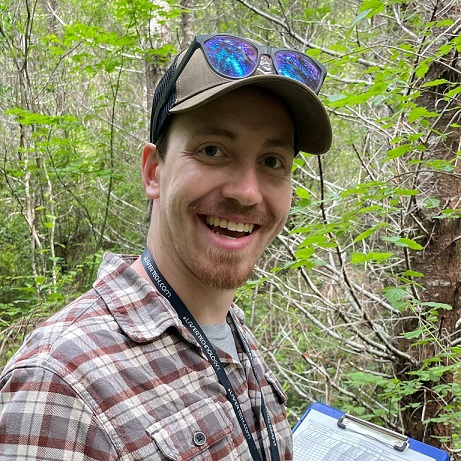

Leave a Reply